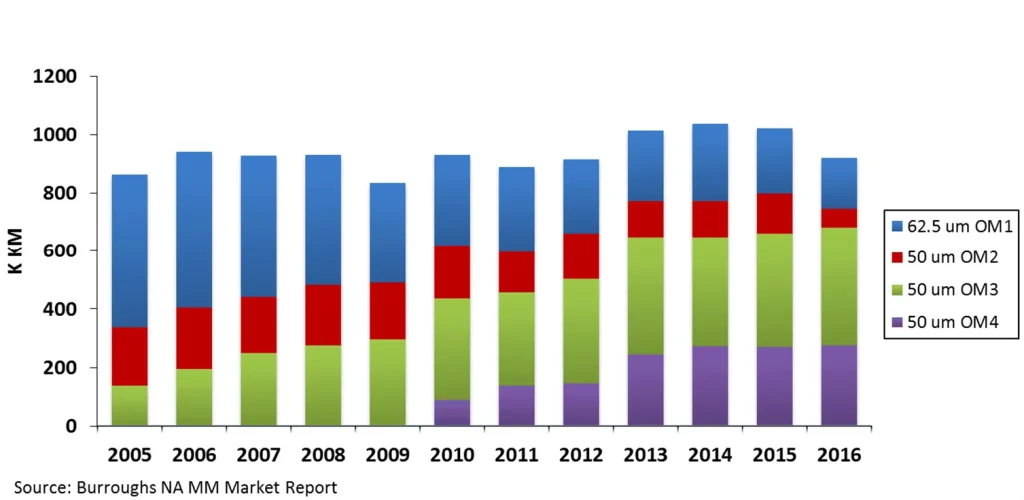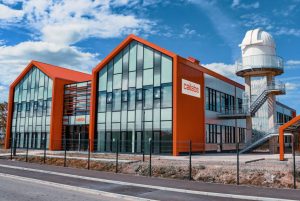Is your network cabling infrastructure limiting your productivity?

A growing demand for increased bandwidth in local networks
Digital communications are undergoing rapid expansion and occupying an increasingly important role. This evolution in communication methods has a direct influence on the infrastructures that support them. In order to support this expansion and any congestion issues that may arise, networks need to be all the more efficient.
IT directors are facing a growing demand for increased bandwidth in local networks. An increasing number of applications require high bandwidth in order to transfer and stream large volumes of data, audio and video files. Developments in the IT world are contributing to increased network traffic with the widespread use of VoIP, video conferencing, online collaboration applications, real-time applications, virtualization, cloud computing and shared storage.
Additionally, many companies have adopted BYOD (Bring Your Own Device) policies. The increasing number of mobile terminals and connected objects has also been contributing to the demand for increased bandwidth. The number of terminals often affects the network and complicates the bandwidth management.
Bandwidth-intensive applications and latency-sensitive traffic types are becoming increasingly ubiquitous in LANs. That being said, a reliable, high-quality service is necessary for transporting these data streams.
For all of this, the right combination of technologies can enhance user experience and support the network load.
Aging cabling infrastructure with limited bandwidth
In LAN cabling infrastructures, the majority of the links are made up of multi-mode optical fibers. Approximately 900.000 km [556.000 mi.] of multi-mode fibers are deployed around the world every year.

Depending on their length and generation, the majority of multi-mode fiber cables do not support the current demand for throughput. Today, it is estimated that over 35% of multi-mode fiber links are limited to 1 Gb/s. This bandwidth limitation of the optical cable is linked to a physical phenomenon known as modal dispersion. To summarize briefly, modal dispersion causes a decrease in the achievable distance, at a given rate, that can be reliably supported between transmitter and receiver.

The table below gives an overview of the performance of currently deployed multi-mode fibers (IEEE sources)

Unlike active network components that can be upgraded relatively easily through software and hardware upgrades, the optical cabling infrastructure has a finite performance envelope that cannot be increased without physically changing the cable that carries the data.
FALSE!! This preconceived idea has been proven wrong.

However, redeploying the fiber is oftentimes a difficult task. It depends upon the distances involved and difficulties in drawing the fibers. An audit of the cabling infrastructure is necessary in order to verify the availability of the cable duct as well as their condition. Depending on the case, civil engineering may be required to deploy new sleeves. For all these reasons, the costs of redeploying a new cable can be exorbitant. Following this approach may require complex installation and have a significant impact on the business. Today, however, there is an innovative solution that allows for one to conserve their existing cabling infrastructure while simultaneously meeting the growing demands for increased bandwidth in networks. The passive AROONA solution makes it possible to increase the bandwidth of multi-mode optical fibers by blocking modal dispersion.
If you’d like to know more about the technical reasons that limit the deployment of very high throughput over existing multi-mode fiber infrastructures, the issue of modal dispersion and its impact on the performance of multi-mode fibers currently in use, then download our white paper on this topic to find out more.
And don’t forget, it’s now possible to preserve your cabling infrastructure by converting your multi-mode fibers into single-mode fibers to meet the growing demand for increased bandwidth in your networks. Quick, come check out the AROONA line!

By Kévin Lenglé
Kevin Lengle, who’s worked as a researcher at the CNRS (French National Research Center) and a telecom equipment manufacturer, holds a Master’s degree in Engineering from the National School of Applied Sciences and Technology and a Ph.D. in Physics. He’s been working at Cailabs as a Product Line Manager since 2015, bringing his expertise in optics and telecommunications to the development and commercialization of innovative optical solutions to fully harness the potential of multimode optical fibers.

